Gardens / Global
Down the garden path
Getting out among nature is good for our wellbeing – but where to find it in the city? We catch up with the green-fingered residents who, among the glass and the concrete, are tending to small patches of earth where they soak up the sun and grow what they eat.
‘Nyttehave’ and ‘kolonihave’
Copenhagen
By Michael Booth
Danes are extremists: happiness extremists, hygge extremists and, above all, doing-nothing extremists. They have mastered the art of relaxing, particularly when the sun shines. But in Copenhagen the parks fill up quickly and – if you live, as most do, in an apartment – eventually you’re going to need a more peaceful place to commune with nature. Those with the means have summerhouses on the north coast but there is a far cheaper alternative much closer to the city centre: the nyttehave and kolonihave, variations on the summerhouse-cum-allotment theme, each unique and attracting a subtly different demographic.
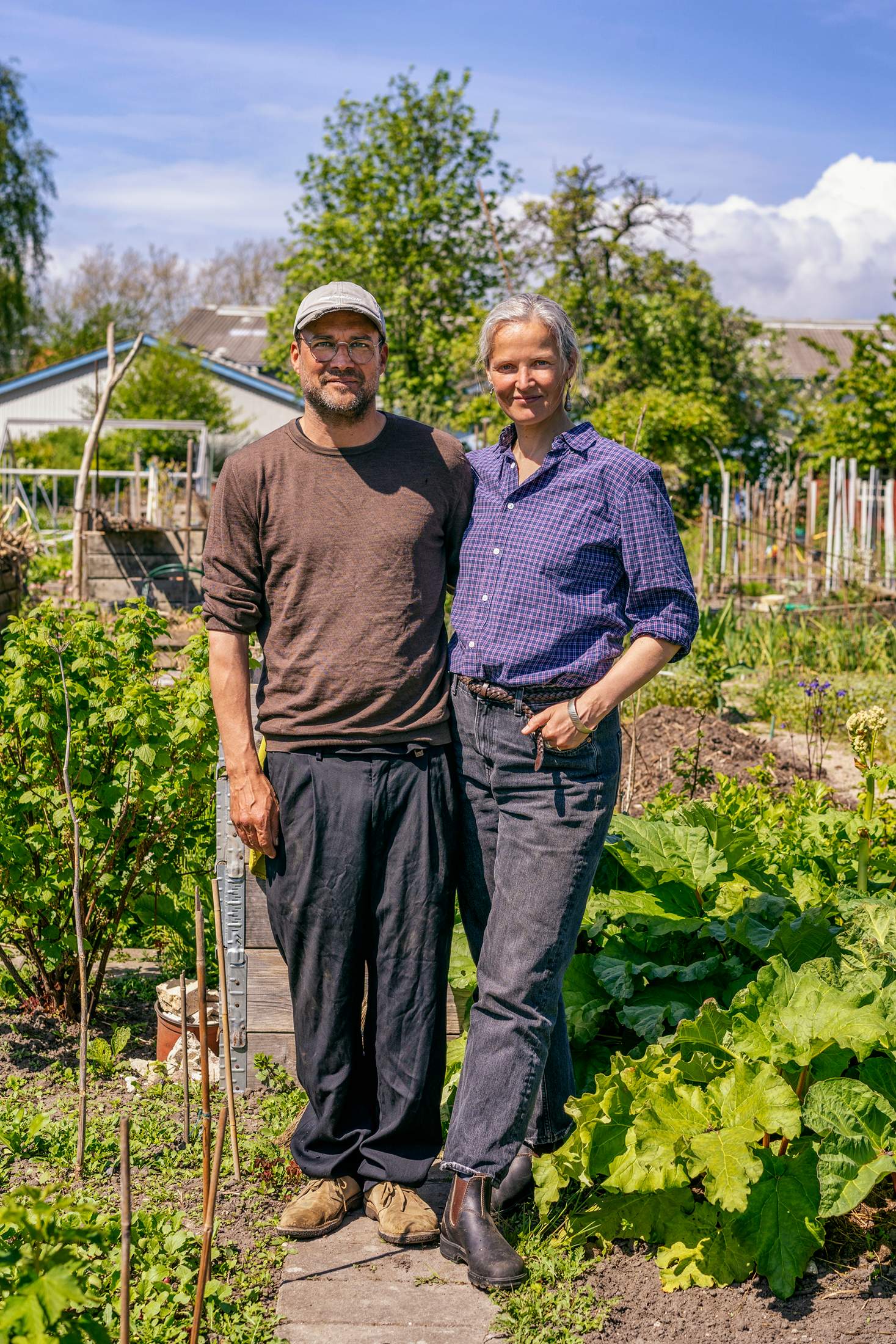
Ebbe Stub Wittrup and Lotte Bank Nielsen
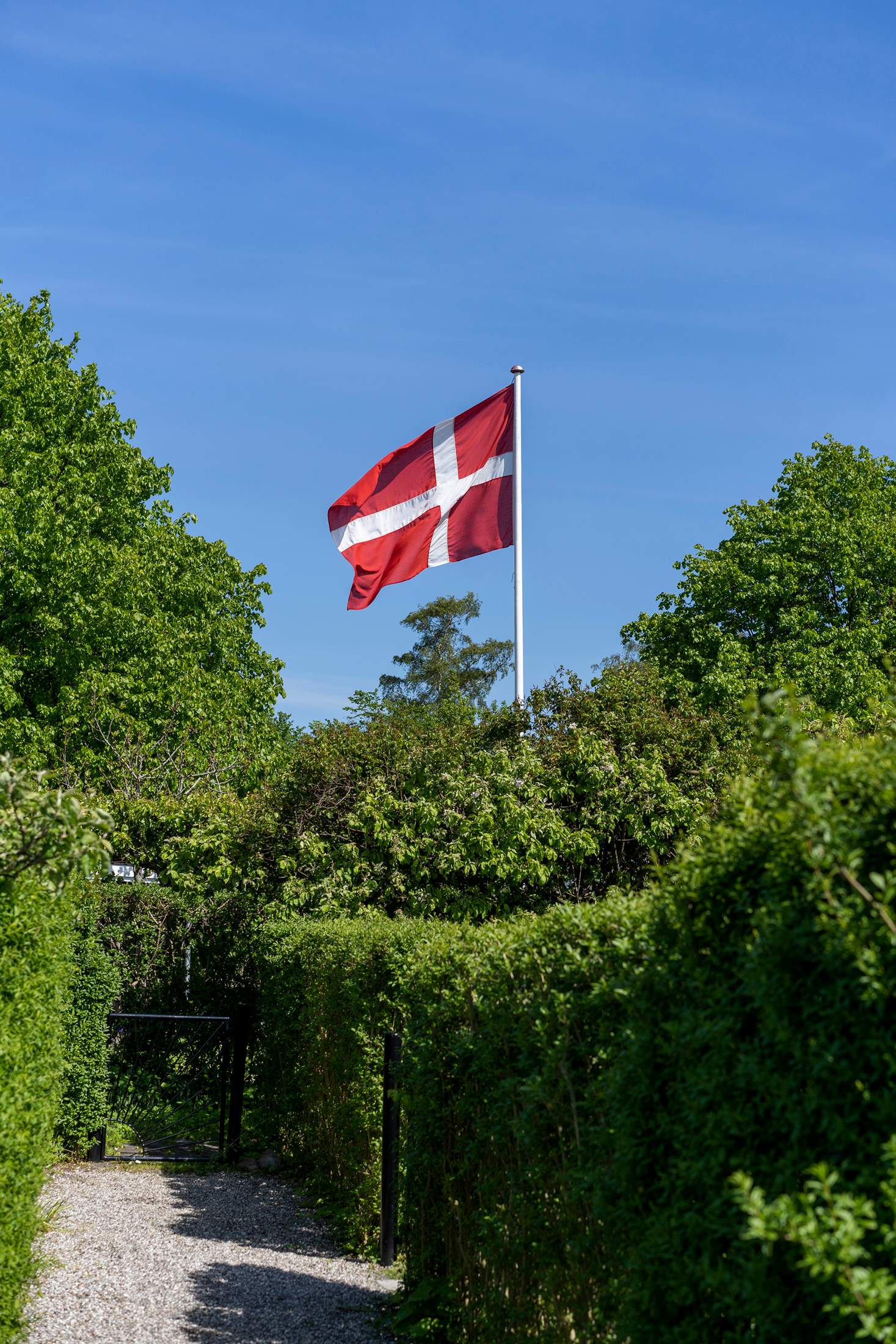
A flag flies at HF Fortbo, a garden association near Kastrup Fort
Denmark has some of the oldest allotments in the world, dating back to the 18th century. They blossomed in the wake of the Industrial Revolution then boomed again after the Second World War: the idea was to help the working class boost their levels of vitamin C, from growing fresh vegetables, and vitamin D, from being in the sun. While nyttehave are simply allotments with a shed for growing and potting, you can conceivably overnight in the more habitable kolonihave, some of which even have kitchens and bathrooms.
“A kolonihave and an apartment is the perfect combination for me,” says Copenhagen-based novelist Michael Robak. “You get very tired very quickly of sitting in a park, realising you’ve forgotten the corkscrew, worrying about the people around you.” Film and TV costume designer Signe Sejlund, who migrates to her fetching kolonihave at Kastrup Fort with her husband Hans Bullitt Fogh (of Bullitt bicycles) every summer, agrees. “We don’t want a posh summerhouse up in Tisvilde,” she says, admitting that her kolonihave is probably worth as much as some proper summerhouses but that she only pays dkk350 (€45) a month ground rent. “If I was up there, I’d only be seeing the people I work with. Here there’s a much more diverse mix of people and you get to know everyone because we’re all so close together. That makes it a real community.”
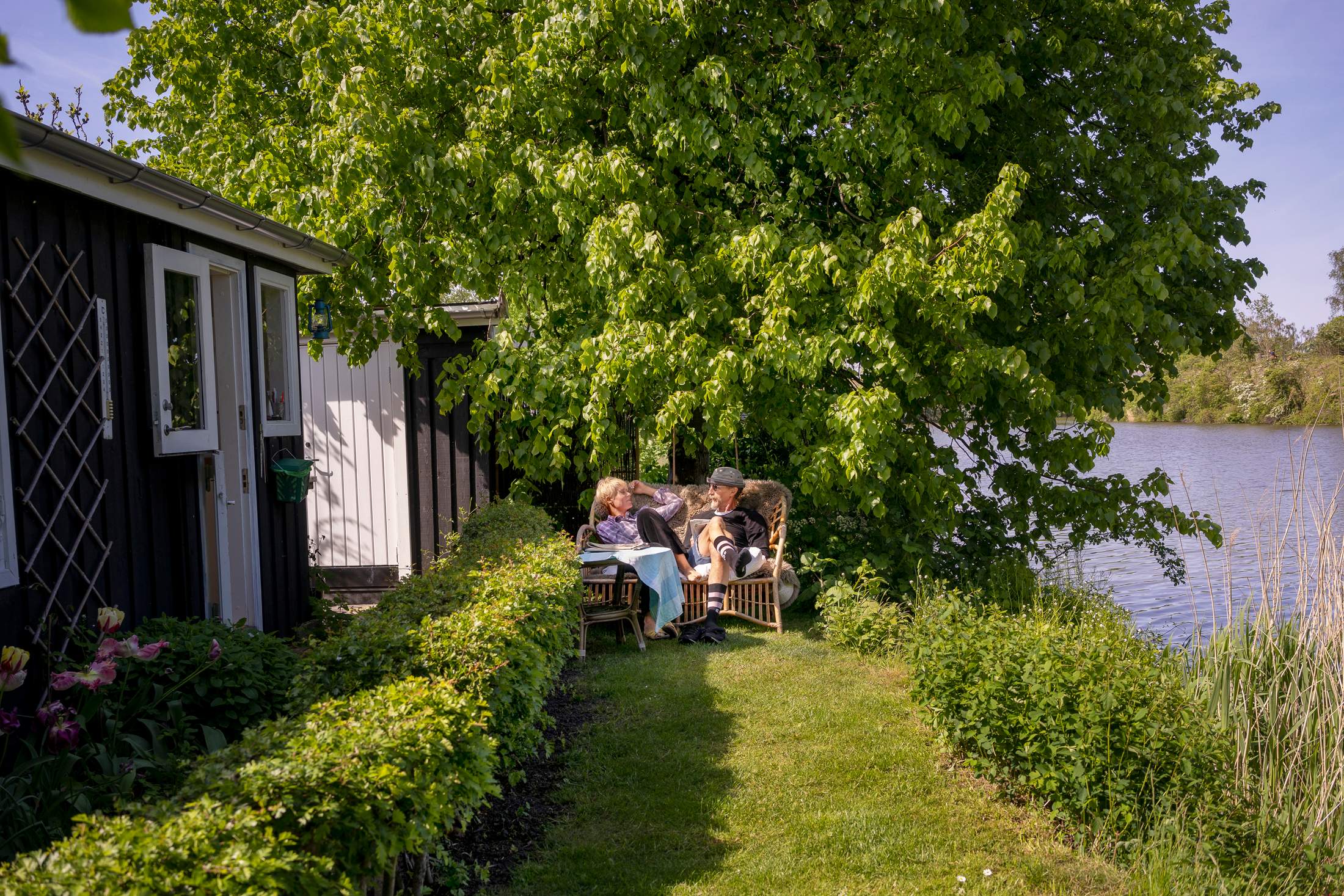
Signe Sejlund and Hans Bullitt Fogh take five
The mingling happens in nyttehave (literally “useful gardens”) too. “We have a mix of ages and backgrounds. There are 85-year-olds who have gardened here all their lives, and Moroccans and Turks who grow different things and show us how,” says gallery director Jeanette Lindholt Madsen. She pays dkk2,000 (€265) a year for her nyttehave in Valby: two plots of land with a shed painted regulation red (the Danes might be relaxed but there are still rules). “This is the opposite of the digitised world, you can’t force nature,” she adds. Her potato plants, whose leaves have turned brown from a late frost, testify to this but at least the slugs are kept at bay by a ring of broken eggshells: “They don’t like to go over them,” she says.
Madsen’s friend Lotte Bank Nielsen shares her evangelical fervour for nyttehave life. “I’ve had an epiphany working here,” she says. Lotte was so inspired by her nyttehave that she has given up her work as a fashion designer and is retraining as a horticulturalist. Her husband, artist Ebbe Stub Wittrup, has got into the growing movement too. “When you come here, you step into a different space for thinking and also leave thoughts behind,” he says. “And if you have two plots, you’re allowed to have a greenhouse; it’s like Monopoly.”
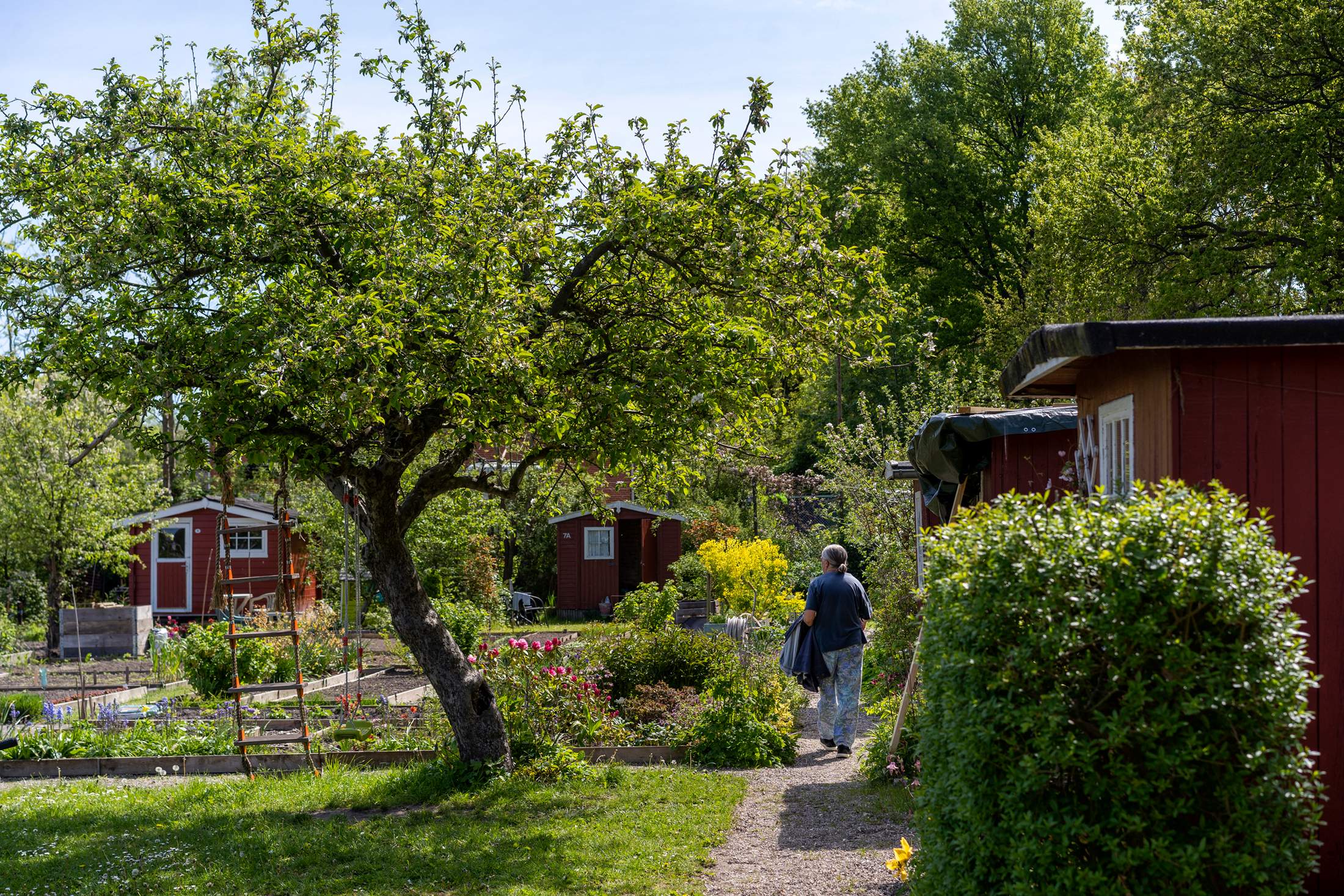
A view of the well-tended plots at NF Ellebakken, an allotment to the southwest of the city centre

Sejlund’s wooden house at the HF Fortbo ‘kolonihave’

Jeanette Lindholdt Madsen and assistant
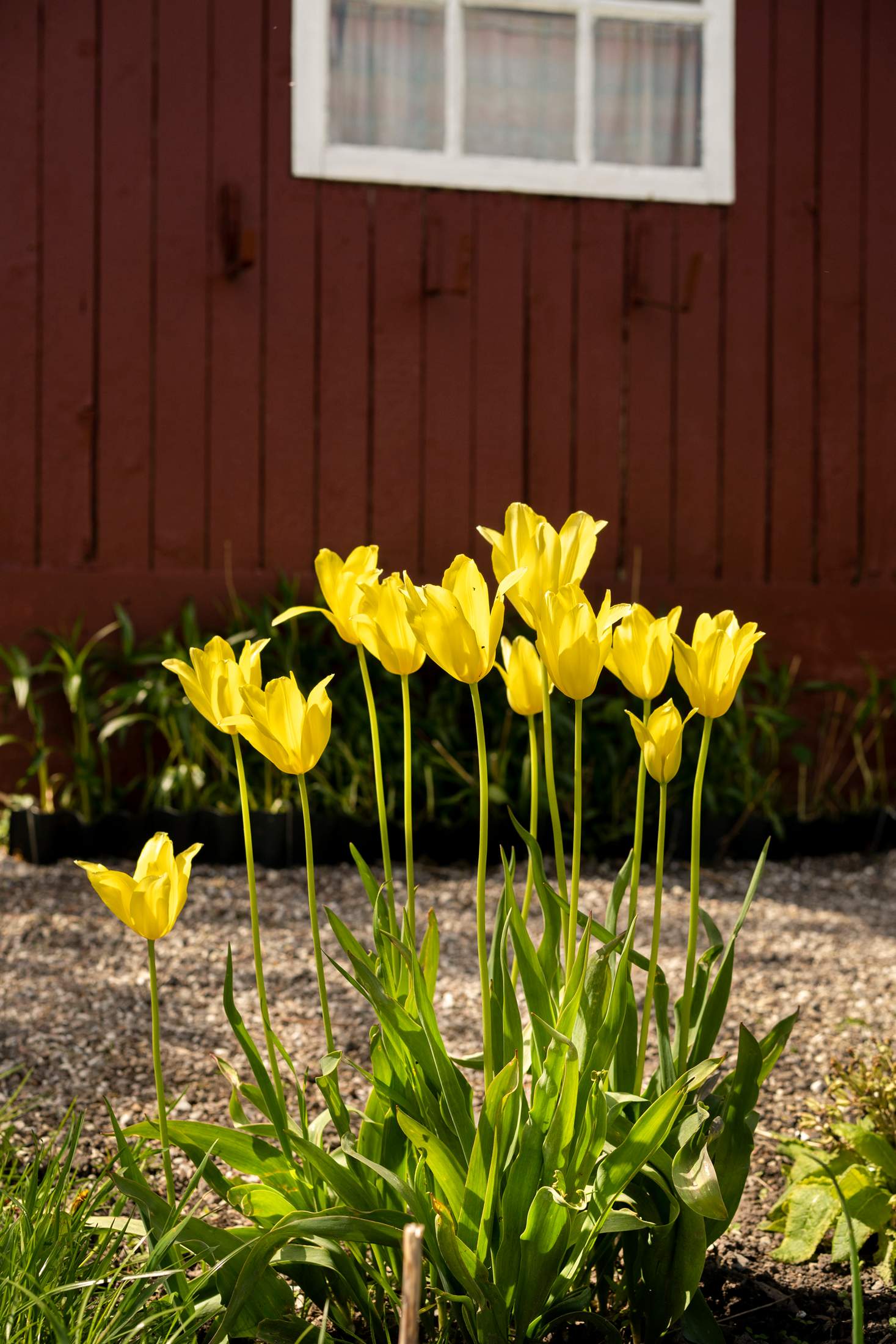
Tulips in bloom at NF Ellebakken
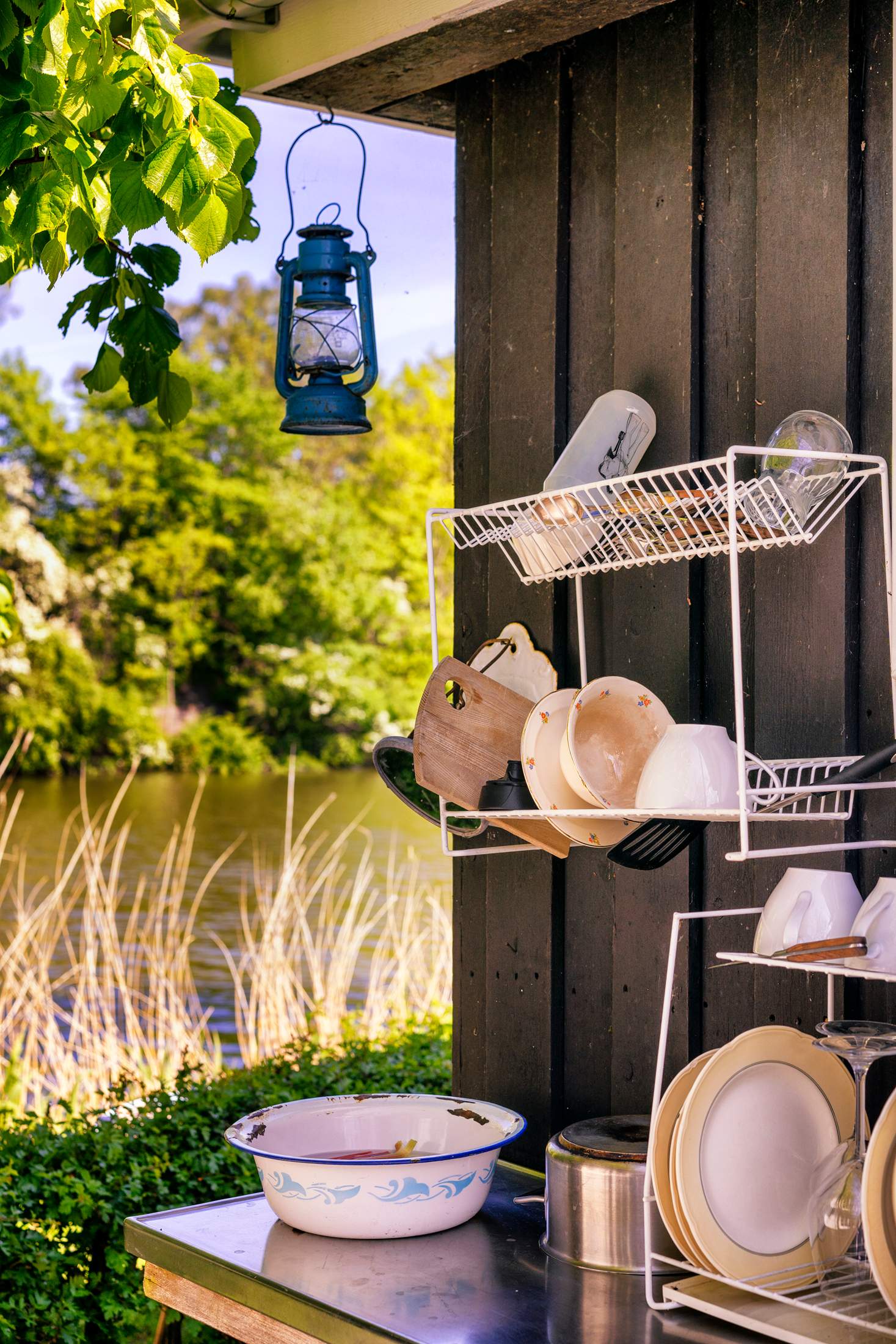
Sejlund’s outdoor kitchen
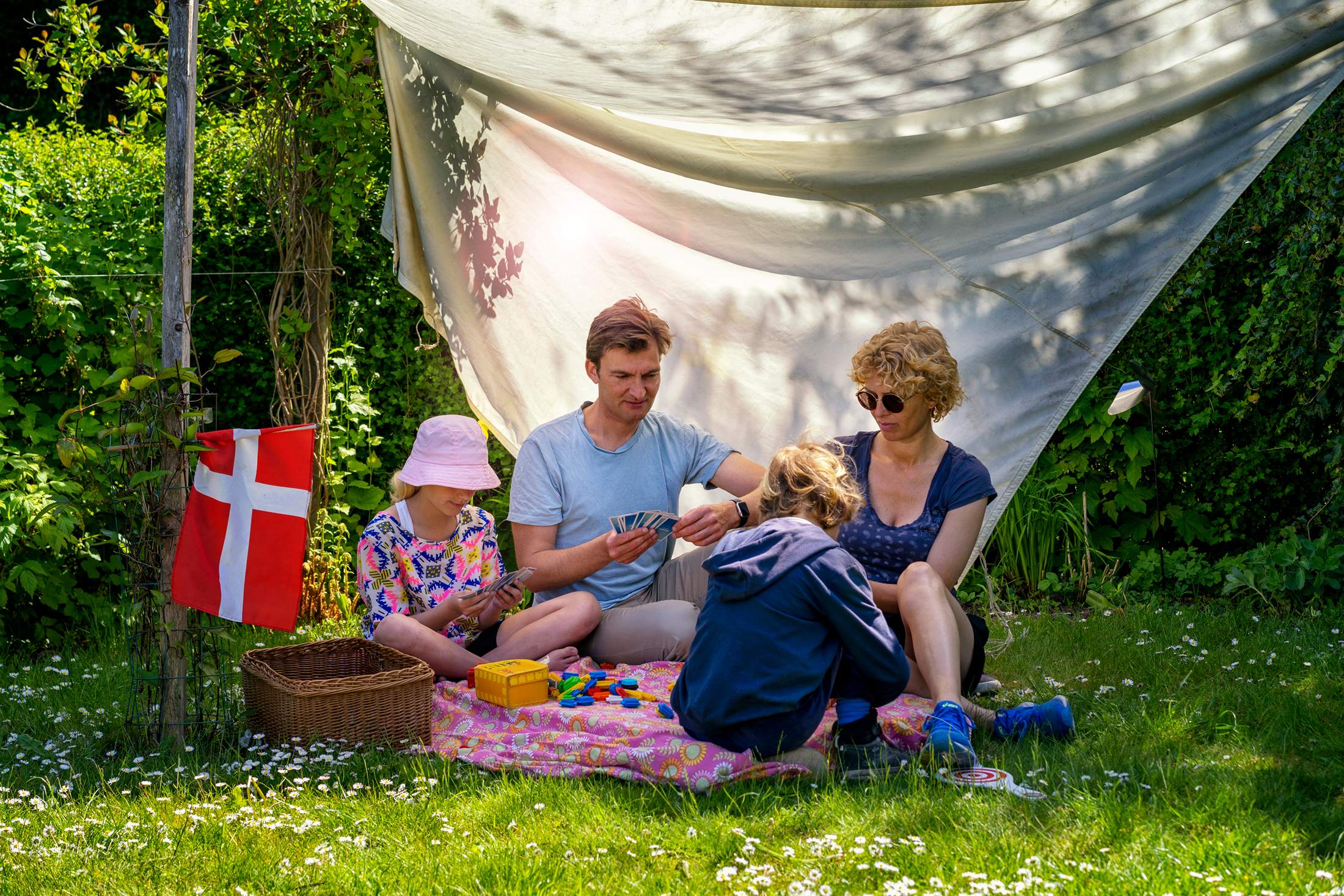
Family games at Lille Nok allotment
Imajuku Community Garden
Yokohama
By Junichi Toyofuku
Urban farming might seem unlikely in space-scarce Japan but Imajuku Community Garden in Yokohama shows green shoots of hope for more self-sufficient city living. A 20-minute drive from the bustle of Yokohama Station, the garden – which is a 10th of the size of a football pitch – sits within a quiet, residential neighbourhood ringed by schools and nurseries. It’s home to a variety of flowers, herbs and farm produce – including okra, plump strawberries, buttercup-yellow yuzu fruit and goya (bitter gourds) – that is mostly served at community events.
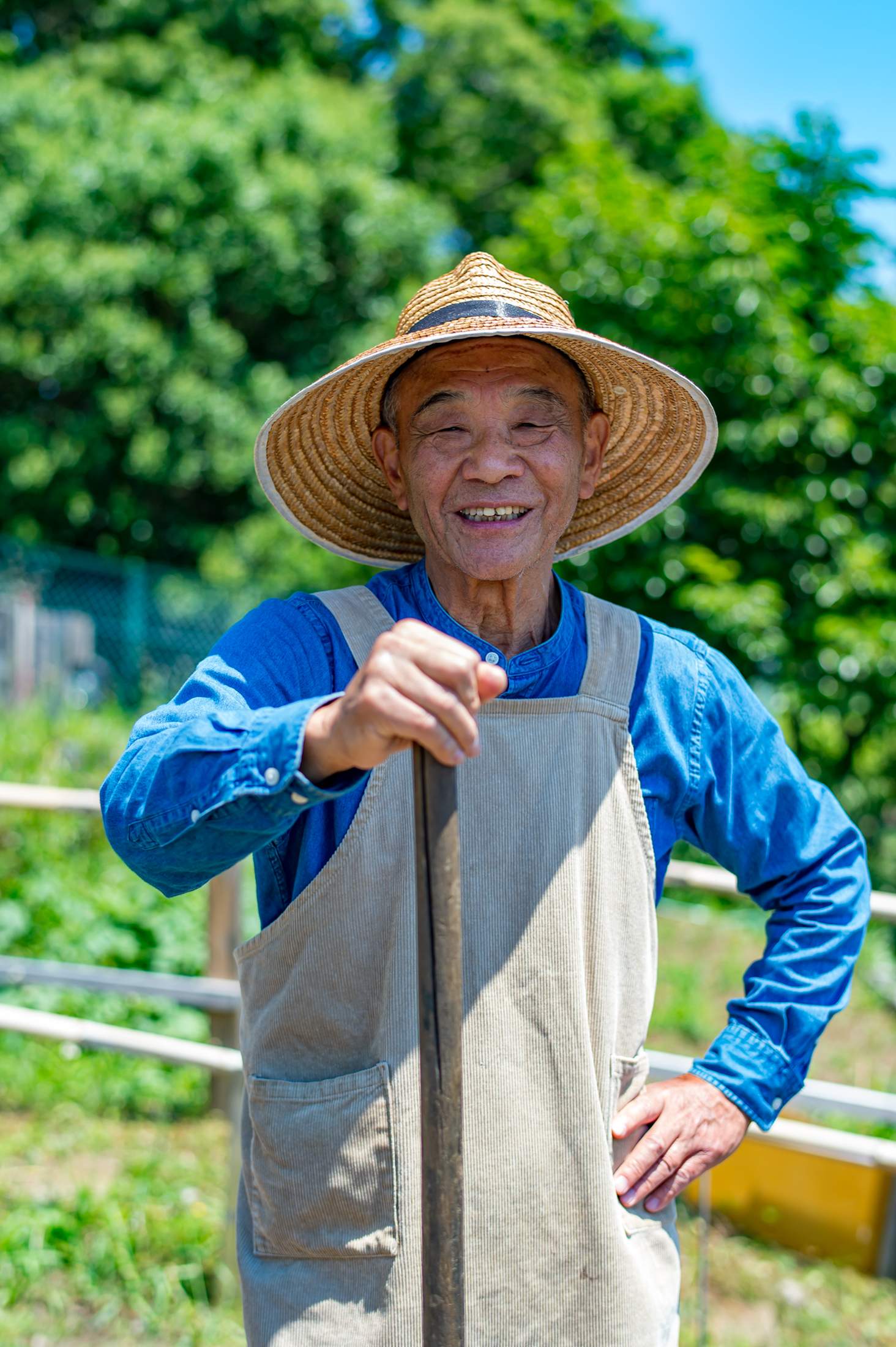
Kichio Kimura leads Imajuku Community Garden in Yokohama
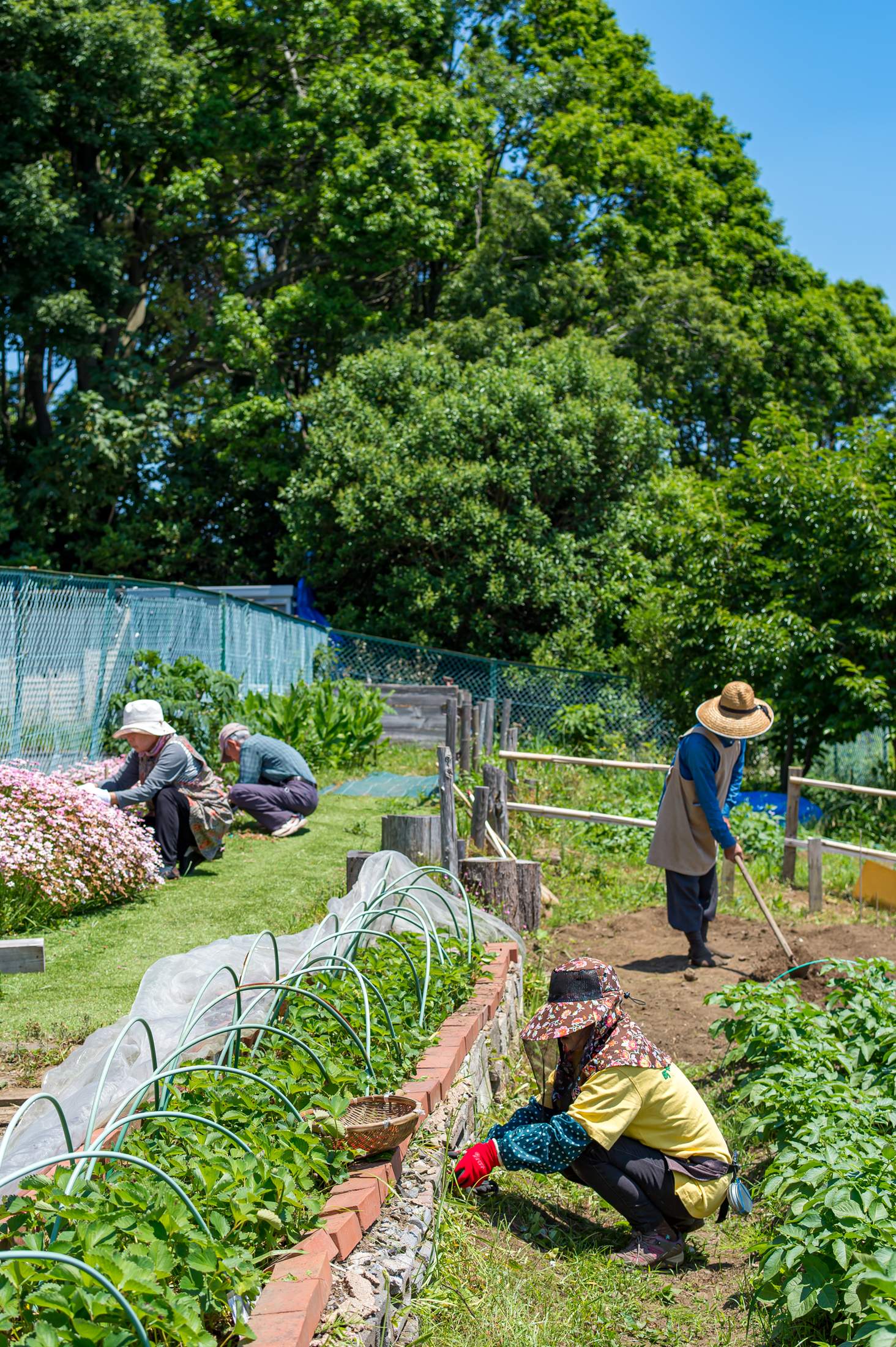
Hard at it
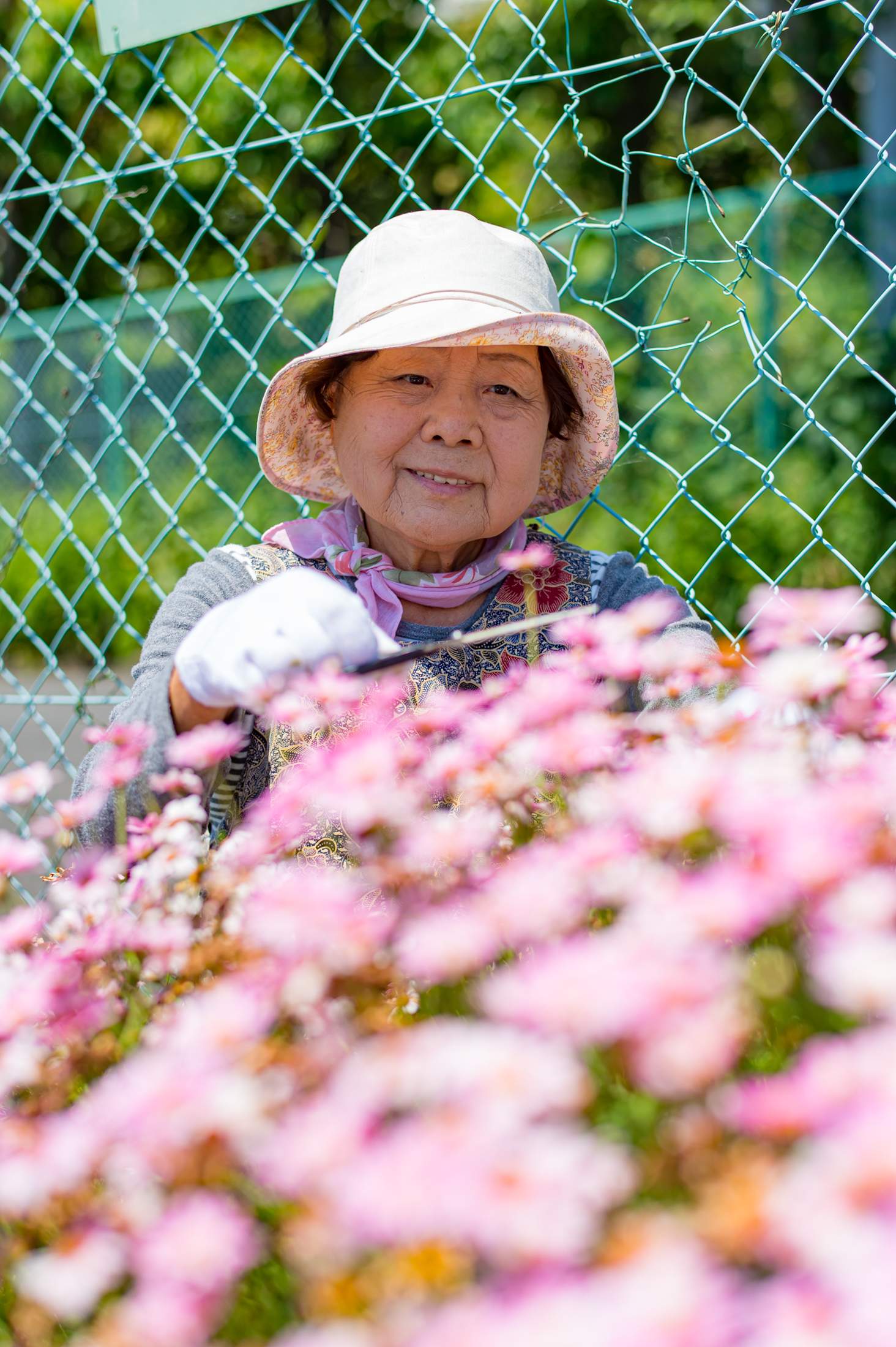
Kiyoe Shimada is in charge of marguerite daisies
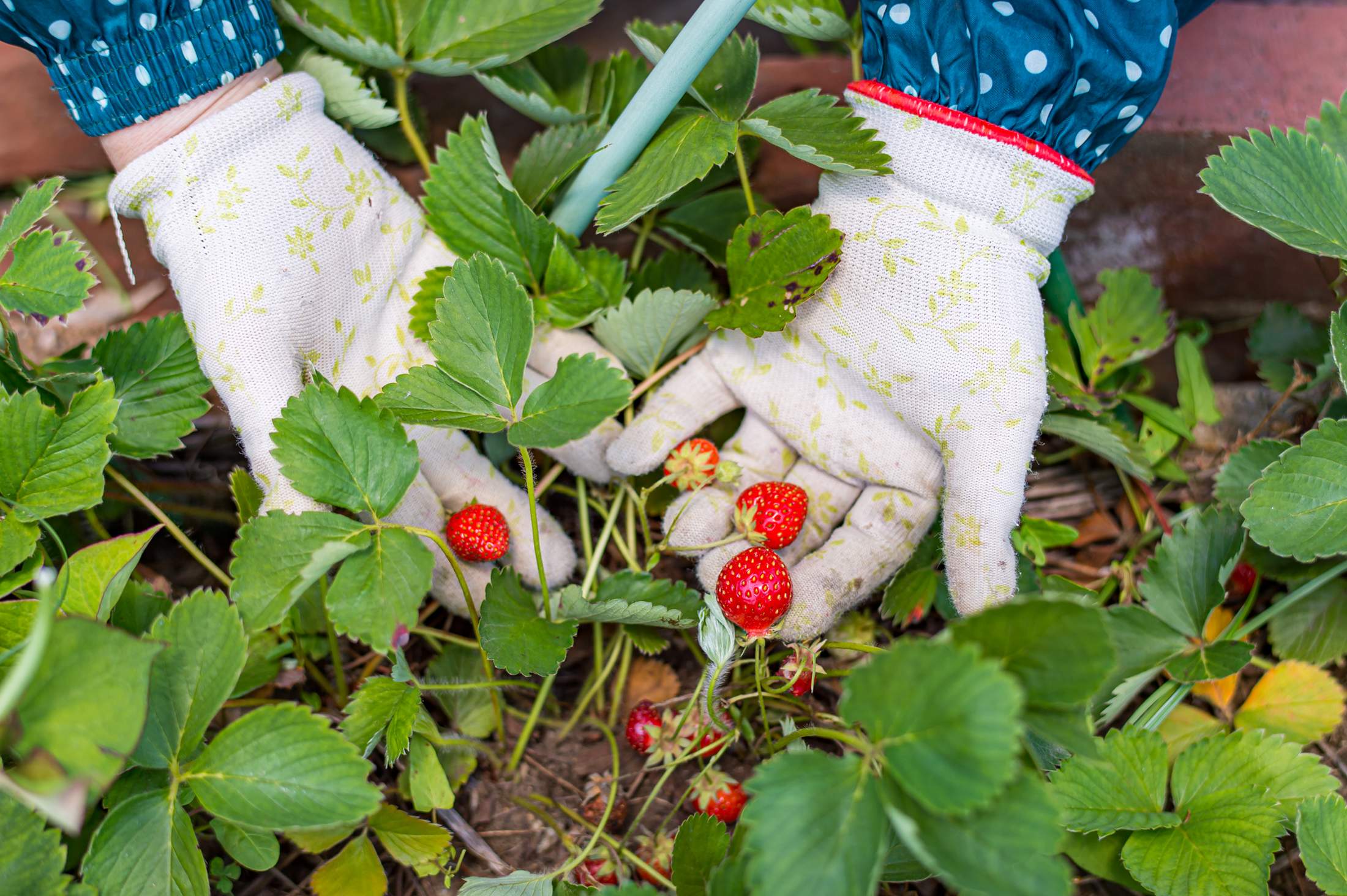
Strawberries in season
The area known as Futamatagawa New Town was developed in the 1970s by a real-estate company called Tokyu. “Back then a number of families moved in to commute to Tokyo,” says 84-year-old Kichio Kimura, who heads the community garden. “Today there are about 12,000 people in 4,000 houses.”
In 2004 a group of five like-minded residents came up with the idea of a community garden and approached the municipality, which dug the idea. “The city found this spot,” says Kimura. “It was the last plot of land left untouched.” The city-owned site was unloved and full of fly-tipped rubbish so it was decided that it would be hired out to the group, who promised a transformation for the good. “The condition was pretty bad,” says Kimura. “For the first few years, we could only grow soba buckwheat.” Today, after years of hard work, the soil is fertile and free from pesticides.
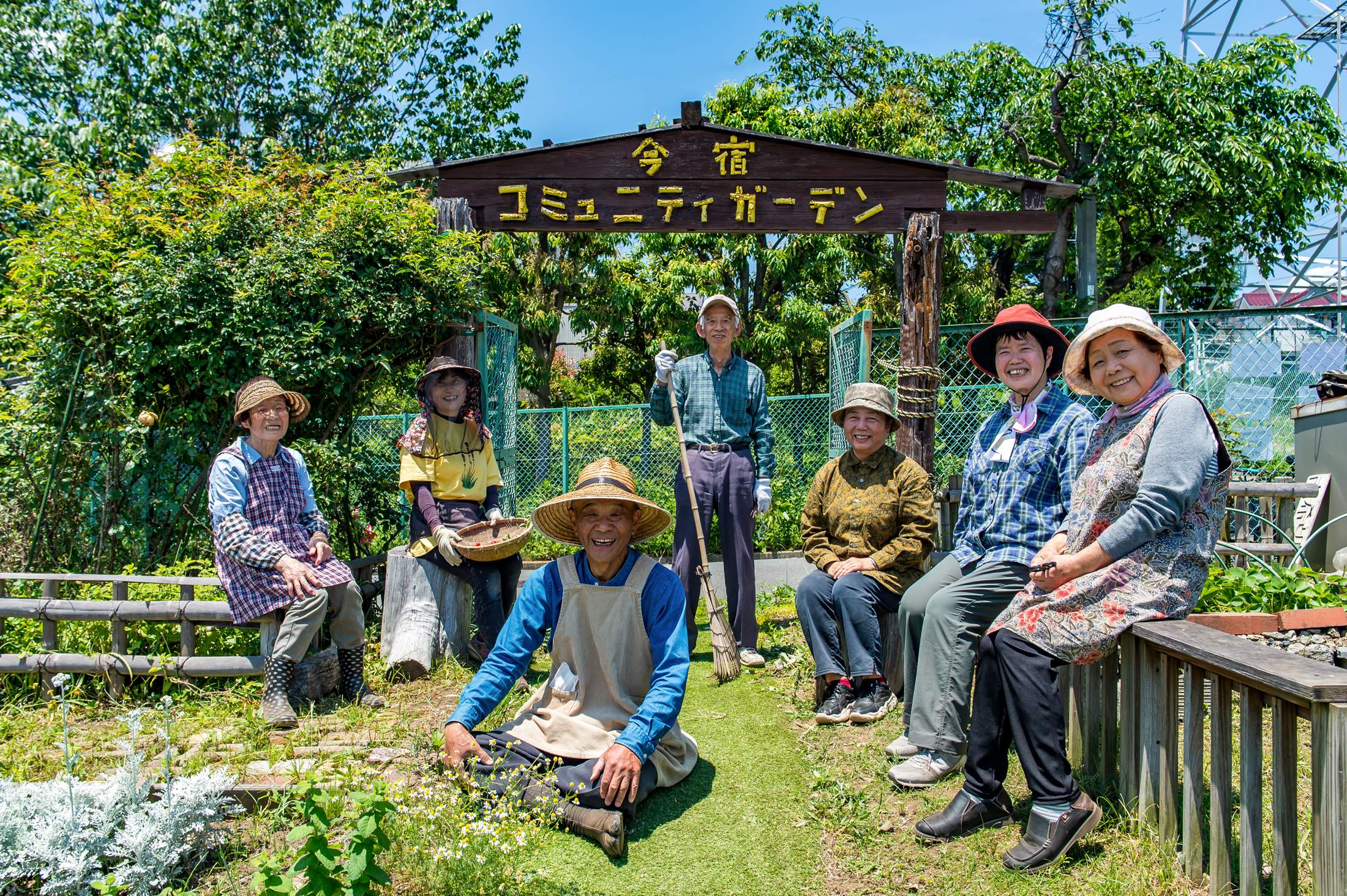
Imajuku Community Garden’s colourful team
Costs are covered by membership fees (40 individuals and local companies are currently signed up) and events such as the autumn harvest festival, which attracts more than 100 visitors from near and far. Most members are smiley retirees but children from nearby nurseries and schools are also keen to get their hands dirty, helping to harvest potatoes and plant seeds. “Children in the city don’t know how vegetables are grown,” says Kimura. “It’s important for them to learn about the food they eat.”
Oranjezicht City Farm
Cape Town
By Mary Holland
On Saturday mornings the Oranjezicht City Farm Market that lines the Atlantic Ocean in Cape Town’s Granger Bay hums with life. Friends catch up over flat whites and pastries, and spend the morning shopping for farm-fresh fare such as lettuce, spekboom (a succulent) and wild sage plucked from the nearby urban Oranjezicht City Farm. Located on a former (and long-neglected) bowling green in the leafy neighbourhood of Oranjezicht at the base of Table Mountain, the farm produces a bounty of vegetables and also rents out space to local have-a-go growers. What makes it interesting isn’t just its inner-city location but how it connects locals with their immediate surroundings.
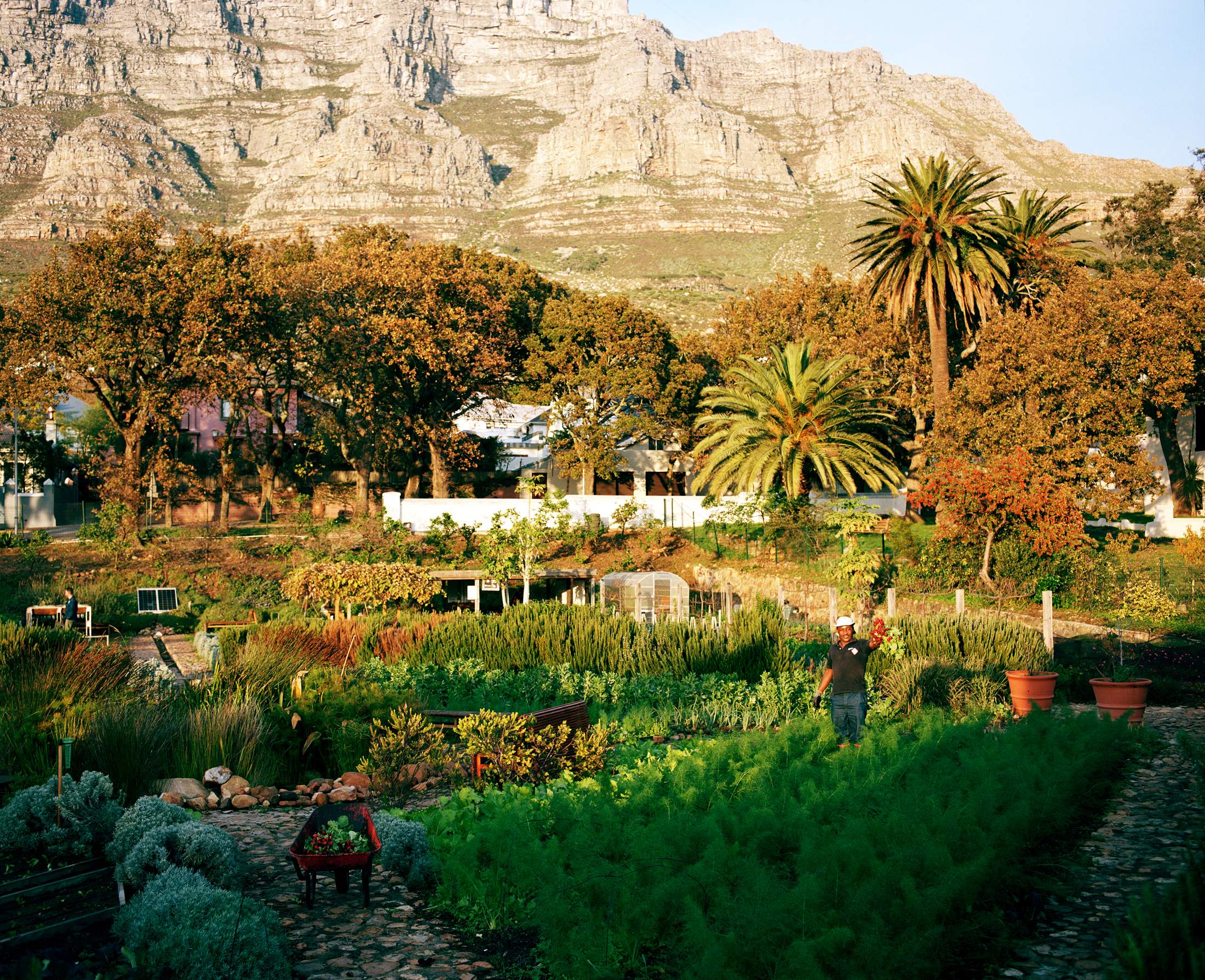
Table Mountain looms over Oranjezicht City Farm
In a socially divided city where residents in wealthier neighbourhoods often live behind walls, the Oranjezicht City Farm – which has 26 allotments that belong to some 4o nearby households – is cultivating communities as well as food. “Through the act of growing food together, we connect people with one another and that builds a social cohesion,” says co-founder Kurt Ackermann. “There’s a community of allotment holders and we have seasonal gatherings where we share stories about what foods people are growing and preparing for their families to eat. We’re trying to find ways of stitching relationships.”
For a city like Cape Town, which can be cliquey and is sometimes criticised for not having strong social capital, connecting communities is crucial – and not just with surrounding neighbours but with the farmers, volunteers and those involved in the farm’s various social programmes too. It’s important to connect the allotment owners with the full-time commercial farmers who cast an eye over the crops, supply seedlings for the amateurs and offer some sage advice on the finer points of cultivation. “There’s a good engagement,” says Ackermann, who adds that cultivating crops is a universal language, one that people of all races and backgrounds speak. “If you’re growing food, you can recognise a beautifully planted row of lettuce – there’s something to bond over and it has nothing to do with the things that divide or connect us.”

Freshly picked Swiss chard
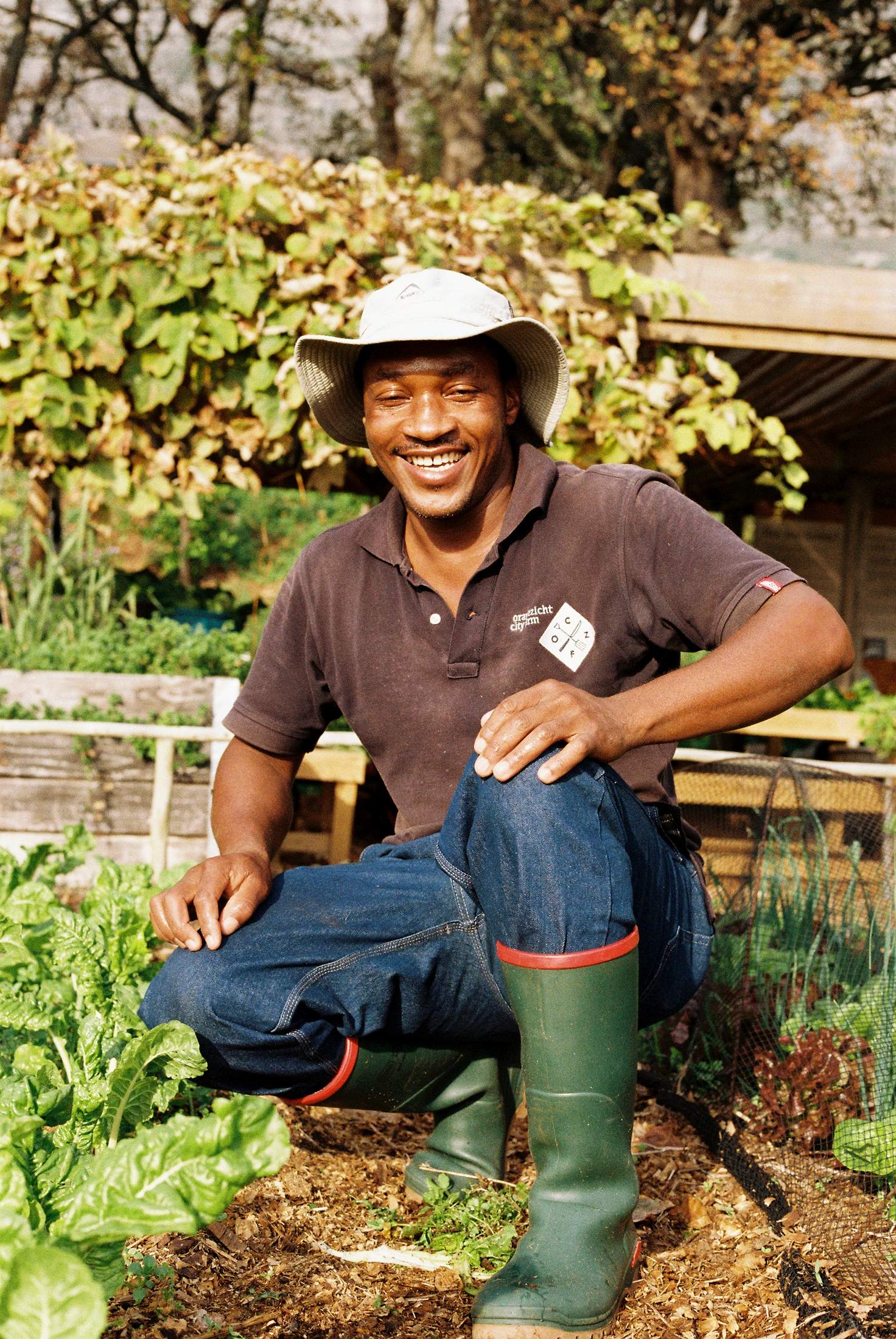
Green-fingered (and booted) Kenneth Masinga

Volunteer Angelina Paynter
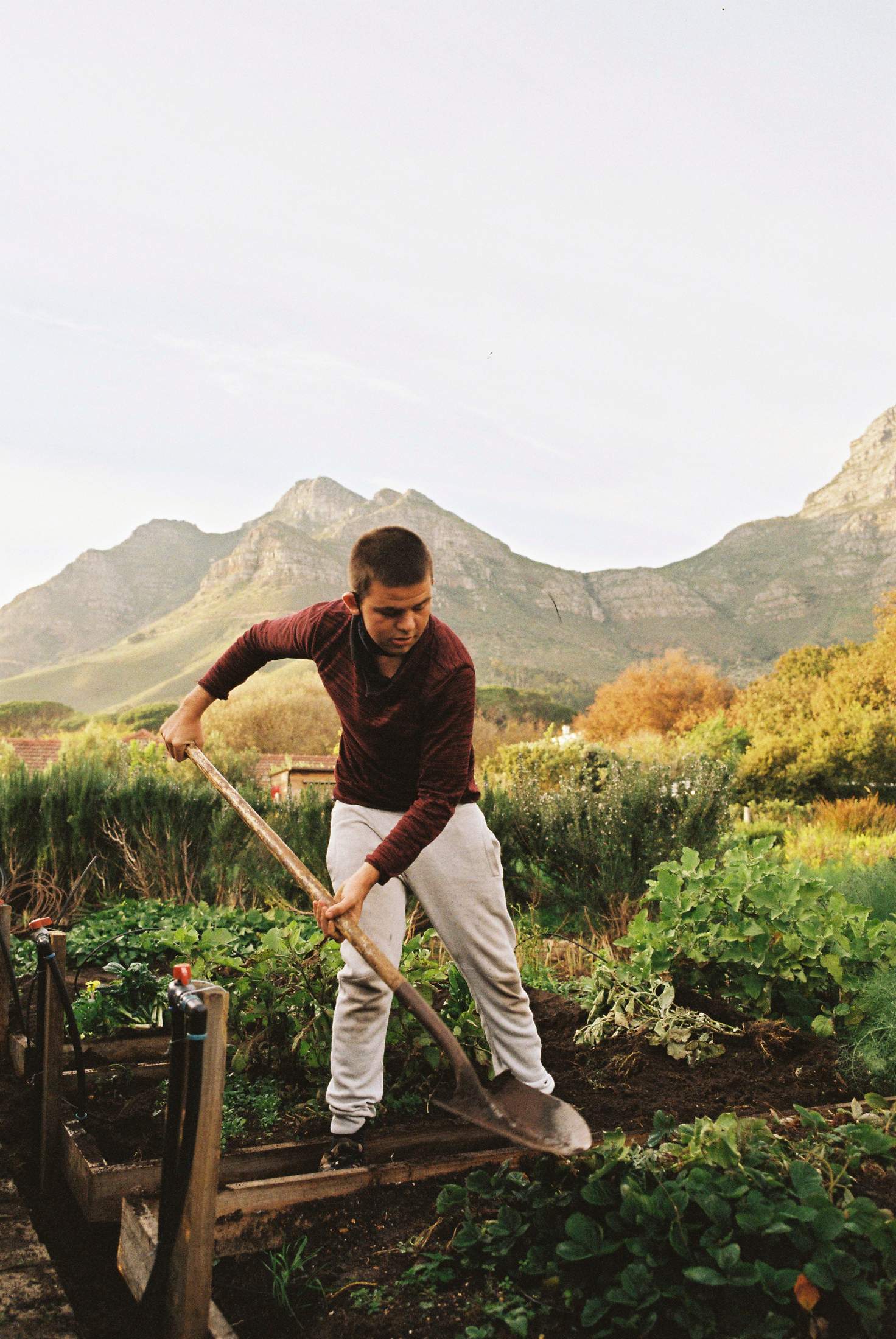
Joshua Harding helps out during school holidays
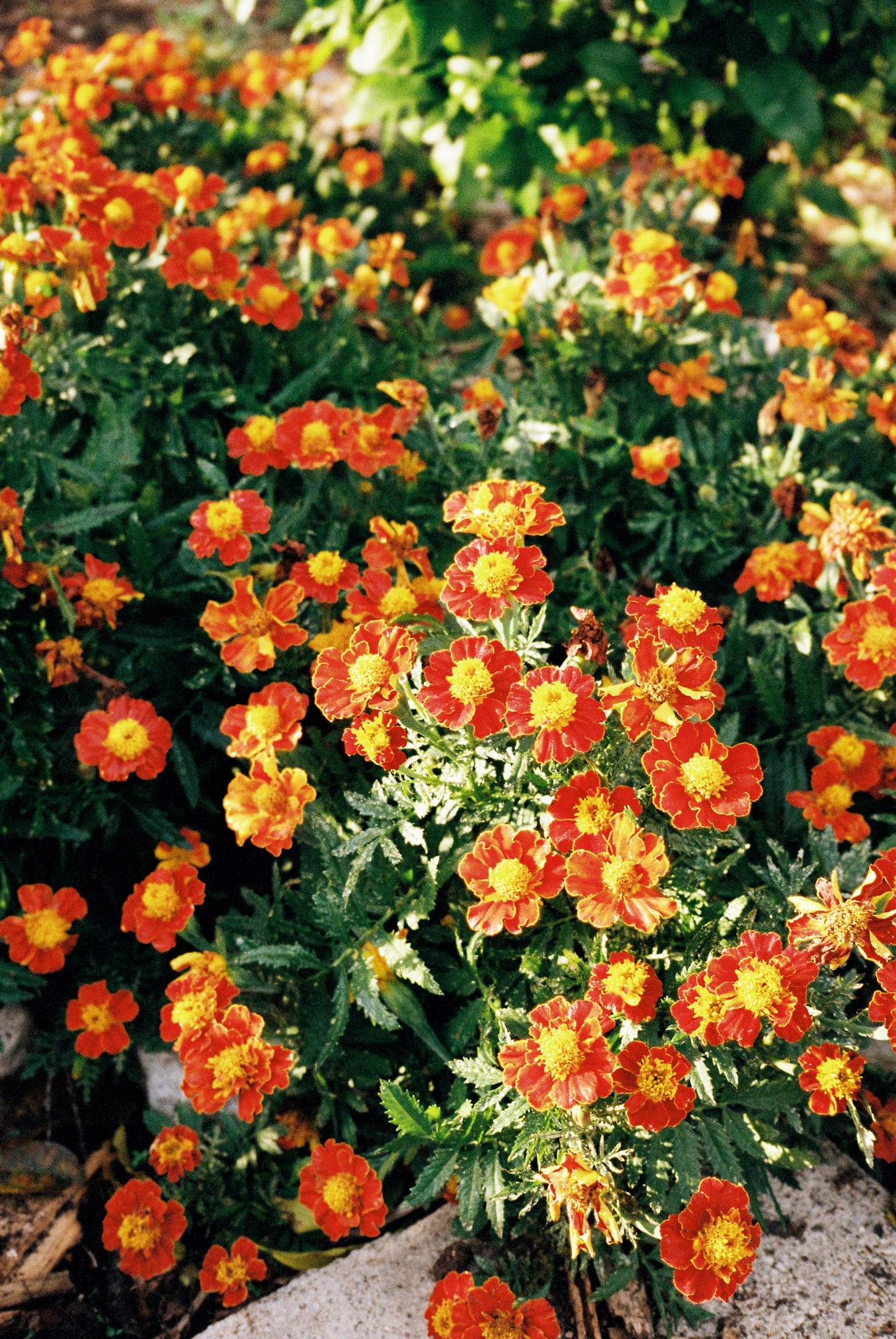
Marigolds in full bloom
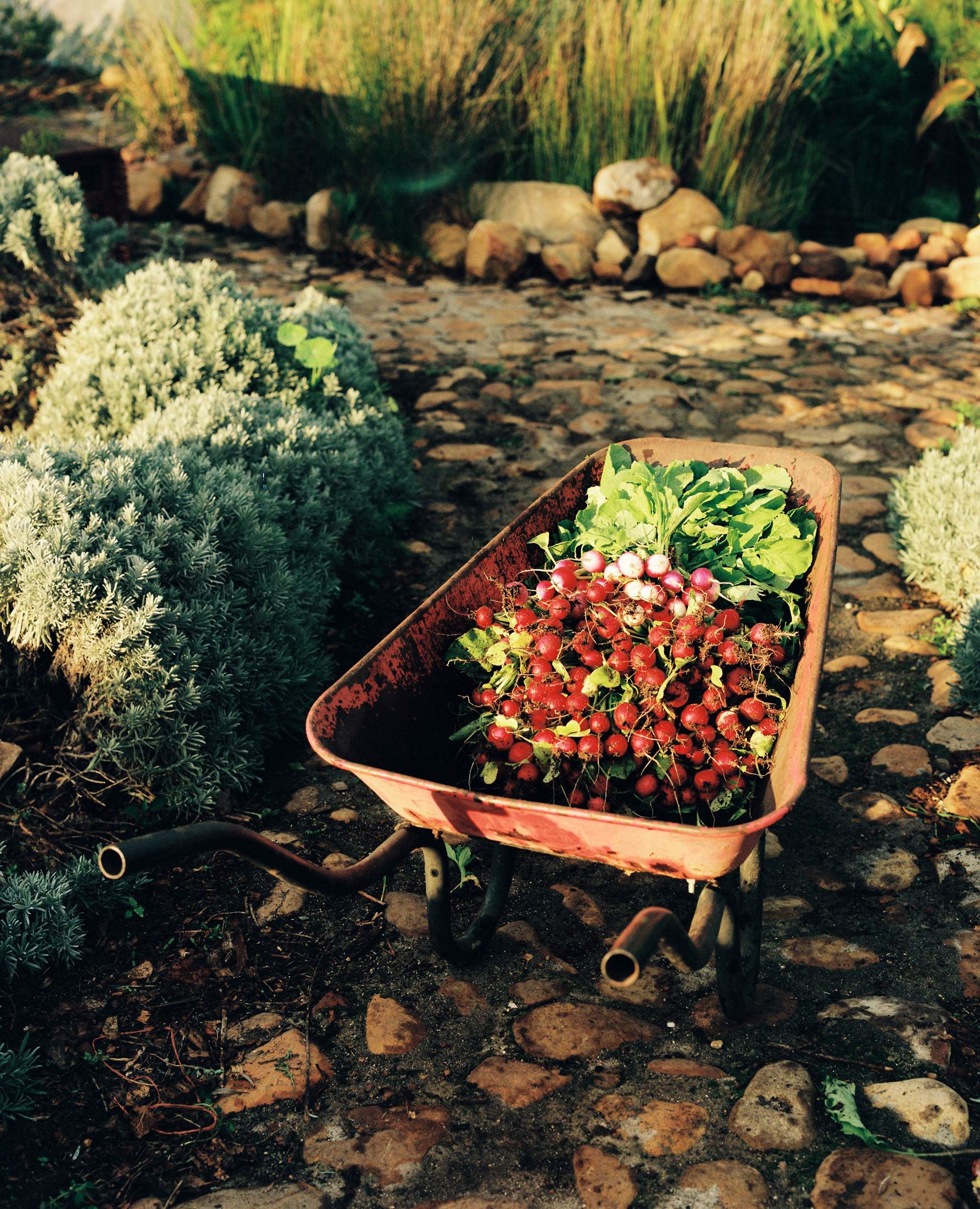
Enough radishes for you?
Sunrise-to-sunset access means that growers can get their hands dirty for a number of hours on any given day. “Having the allotment holders has changed the character of the farm because people garden in a different way when they’re gardening for themselves,” says Ackermann, adding that everyone loves to be able to eat something they’ve harvested and tell a tale about it. Since the allotments became available to renters in 2019, the social dynamic around them has also evolved. “Owners now share their patches with their social circle in a way that wasn’t happening before.”
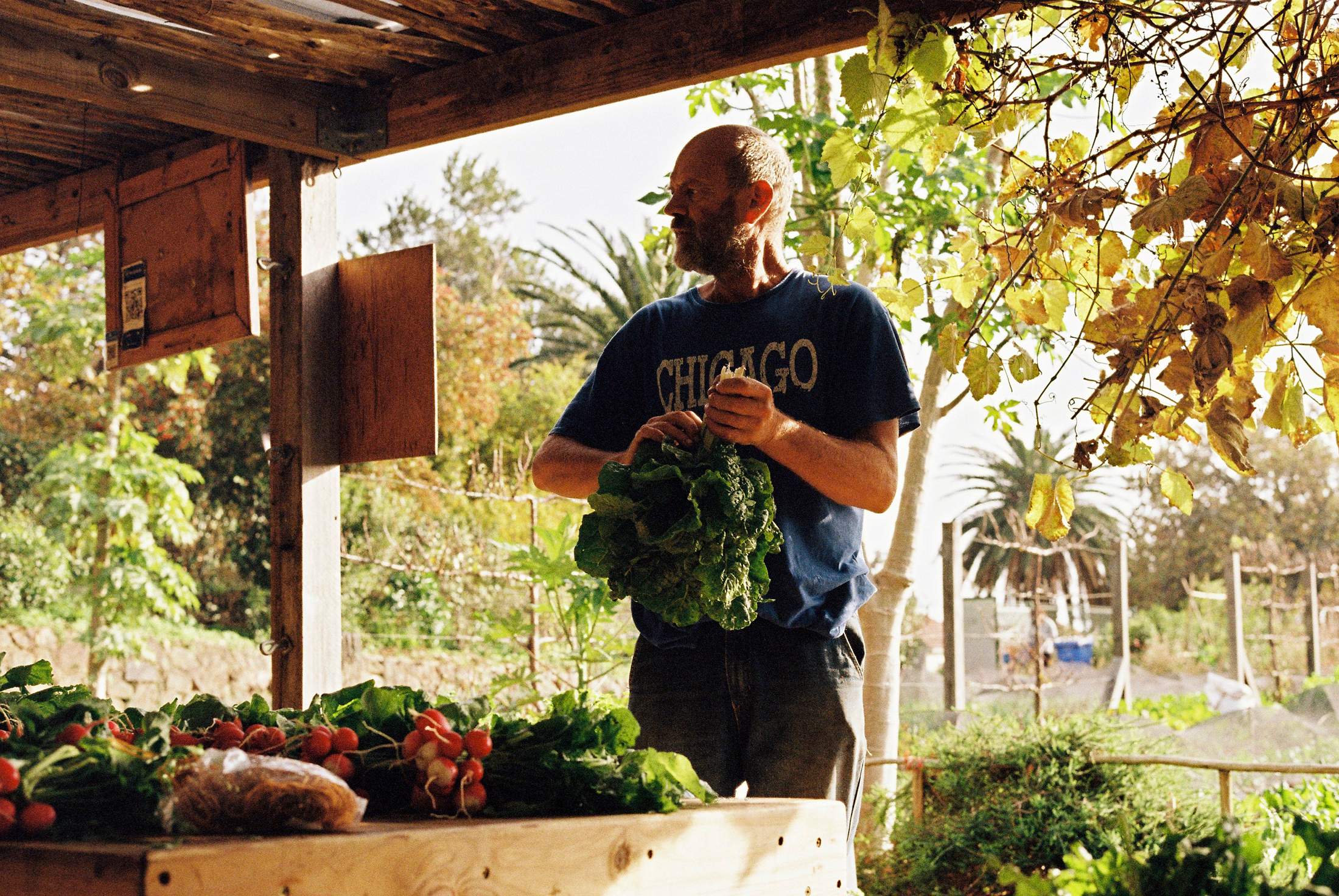
Mark Harding, one of Oranjezicht’s paid farmers
City-wide allotments
London
By Orlando Gili
Allotment ownership in the UK peaked during the Second World War but the practice is seeing a resurgence in popularity today. In the 1940s, the UK had 1.5 million allotments. People were encouraged to “Dig for Victory” and aspire to self-sufficiency and many took up spades and trowels to plant what they could where they could, including, reportedly, an onion patch in the shadow of the Albert Memorial in Hyde Park.
Today the UK capital looks rather different but these scraps of land are becoming increasingly sought-after as spaces in which to unwind. A national campaign now might well read “Weed for Wellbeing” or “Sow for Sanity”, as space-starved city dwellers seek room outside and the simple pleasure of cultivating something to eat or admire. Food journalist Allen Jenkins is an enthusiastic allotment advocate but says that applications for a berth in his north London patch are currently closed – and the waiting list has already ballooned to some 40 years.
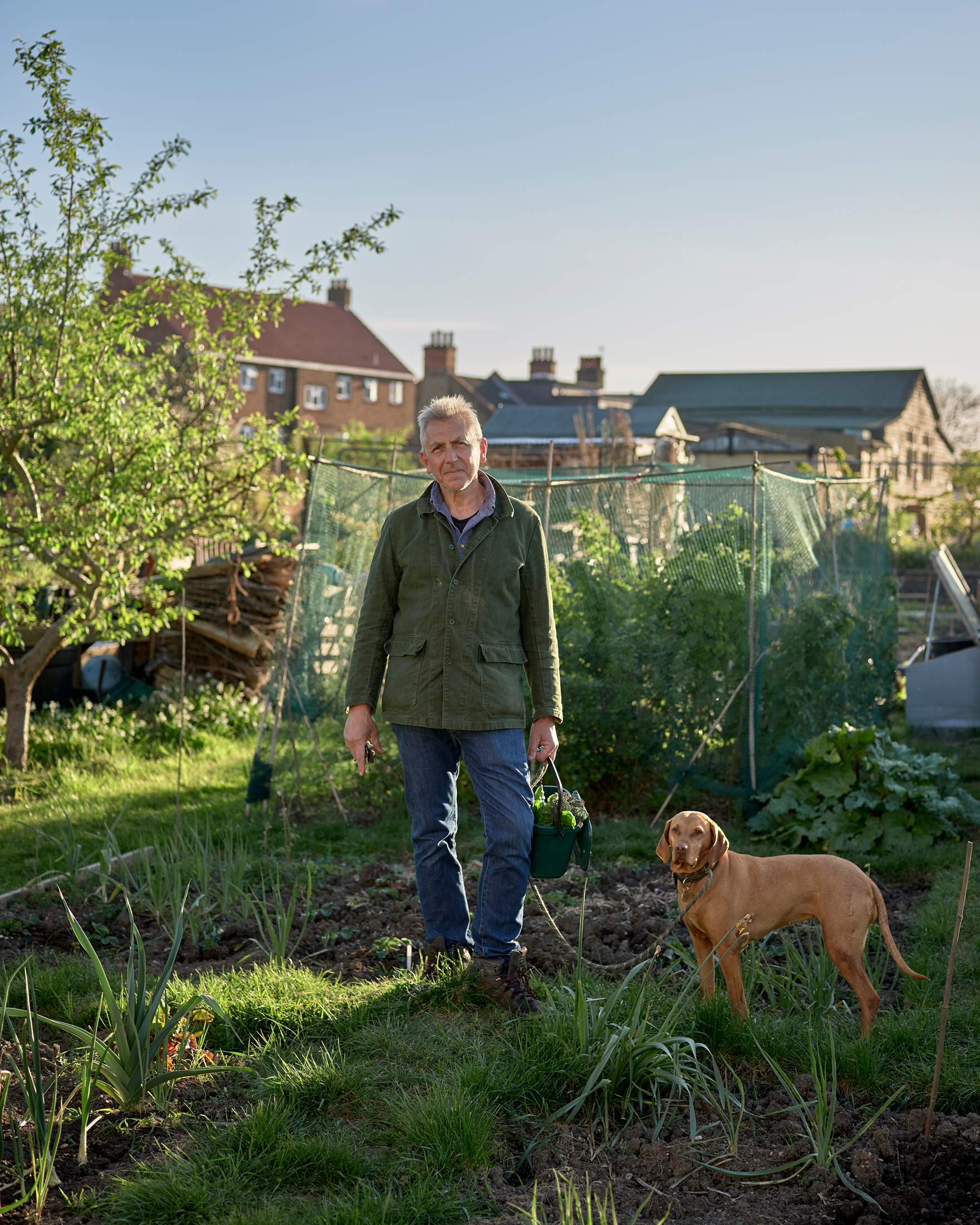
Gary Levart and his pooch at Stuart Road Allotments
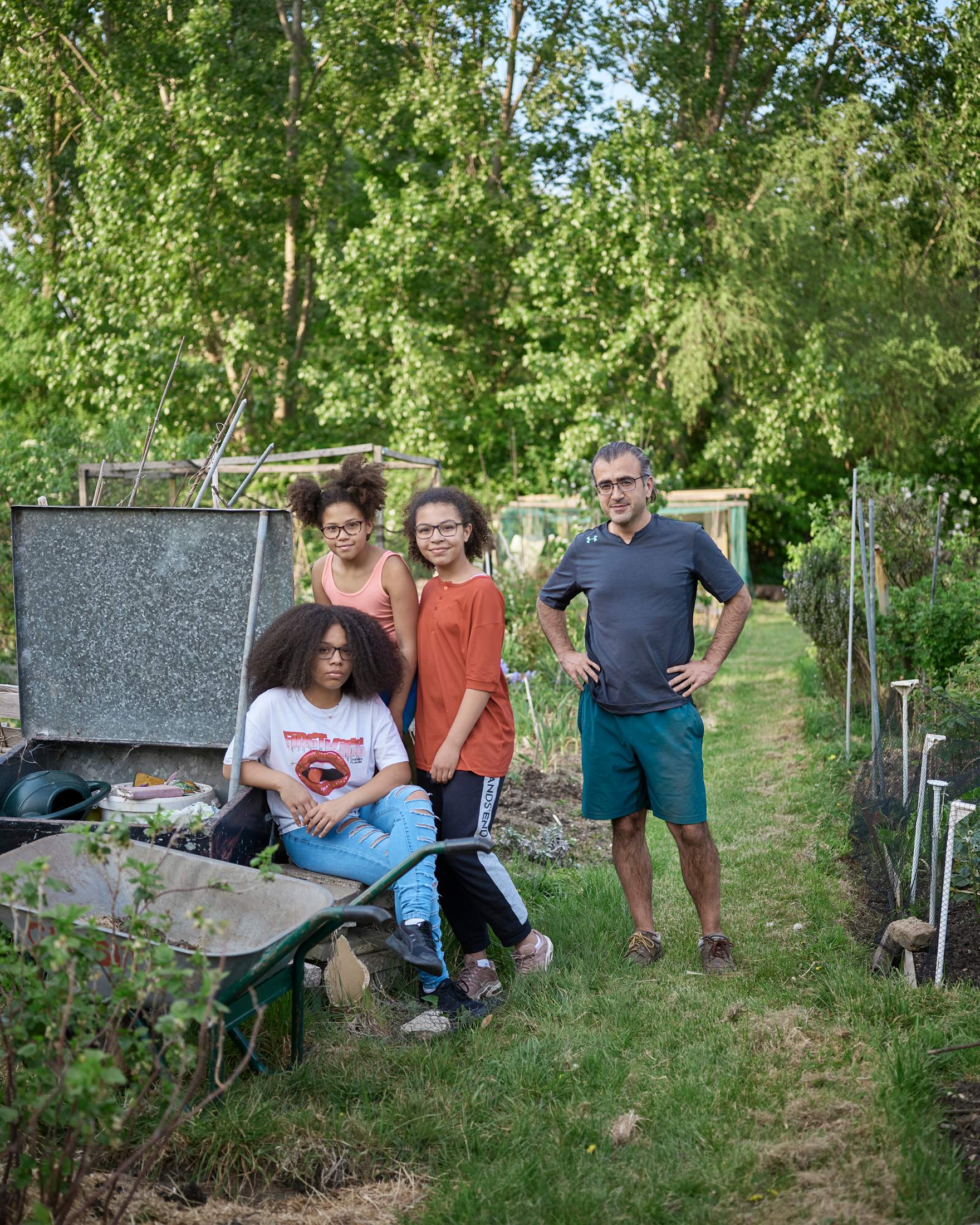
Tariq Khatri and his three daughters at Gun Site Allotments
Looking at The City skyline from Grange Lane Allotments in Dulwich, south London, shows why such shared gardens are popular. It’s like stepping into a Constable painting but one that reminds us that long before London was built, this was a valley where people grew food along the banks of the Thames. The neighbouring Gun Site Allotments, cocooned by swaying trees, takes its name from the anti-aircraft battery that was built here to protect the City of London during the Second World War. Today it’s home to another army, this one comprising people who dedicate themselves to growing apples and carrots. Among them is a proud Chilean with an immaculate patch, an Antipodean couple with a prim corner plot and a single mother with three children to keep entertained. There’s a sense of community alright but there’s also rigid etiquette around asking permission to step on anyone else’s allotted space.
Sandwiched between a nature reserve and a cemetery in nearby Honor Oak lies another slice of rural life in the city: One Tree Hill Allotments. As the sun dips behind the hill, the atmosphere becomes less industrious and more communal, beers are opened and stories swapped – allotment life isn’t just about the plants, it seems. Close by are the Stuart Road Allotments, where a young family of four who don’t have a garden at home spend their time. Meanwhile, the smaller Royal Naval Place Allotment site is a bit more Banksy than Gainsborough: it runs along the Deptford Station train line and is green but surrounded by concrete.
Maintaining a plot can be hard work but most people agree that it provides a sense of purpose and a balm for city life. Plus eating the fruits (and vegetables) of one’s labour can be hugely rewarding.
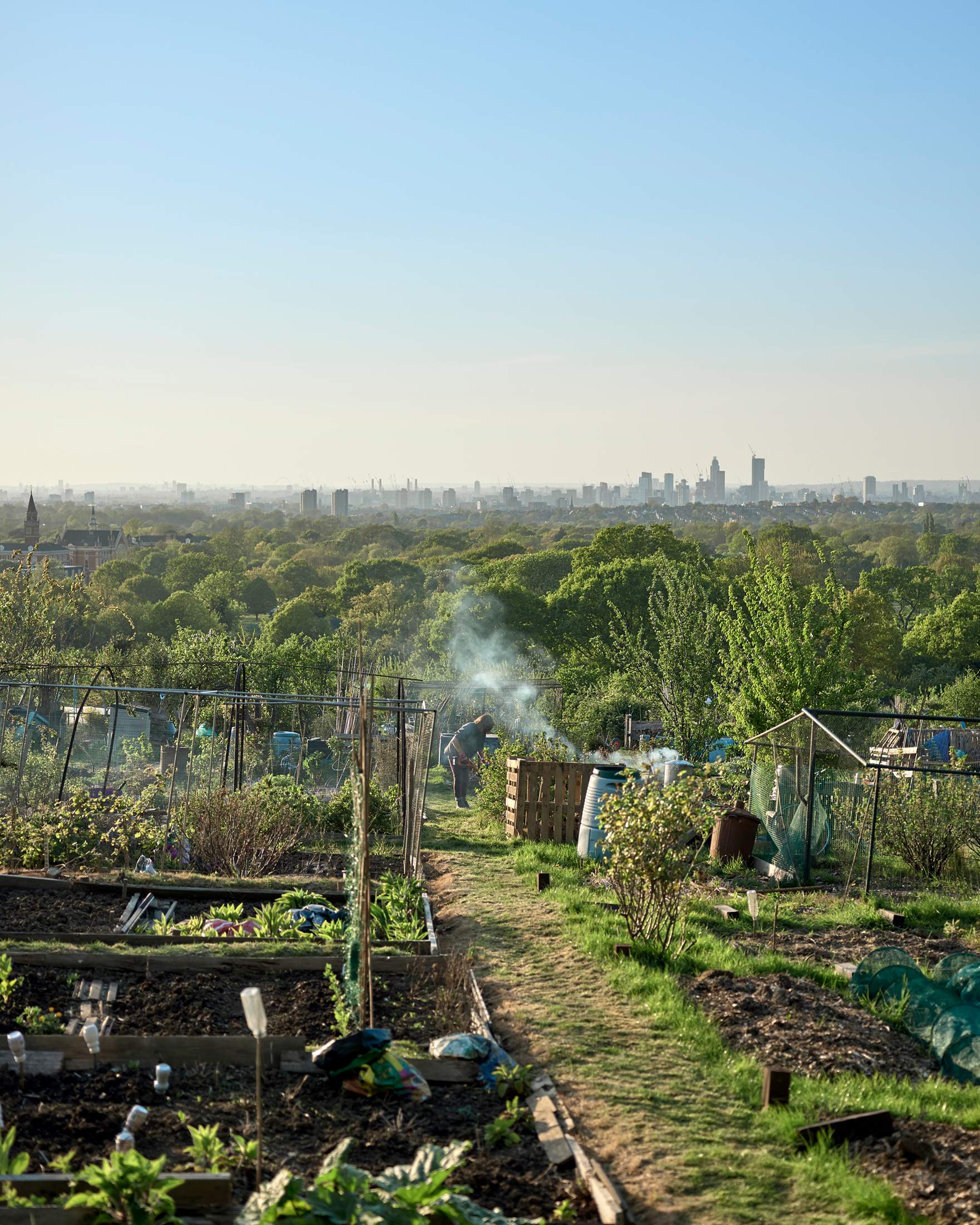
Grange Lane Allotments comes with a view
Erba Brusca
Milan
By Ivan Carvalho
When it opened for business in 2011 along the city’s Naviglio Pavese canal, Milanese restaurant Erba Brusca had a small garden of aromatic herbs and vegetables to complement the fresh ingredients used by Anglo-French chef Alice Delcourt in the kitchen. Today the establishment has doubled down on its “In Dirt We Trust” philosophy by investing in half a hectare of land that sits next door to the restaurant’s dining room. Here Delcourt’s Italian partner, Danilo Ingannamorte, has spent the past two years cultivating a green thumb.
Trained as a sommelier, Ingannamorte previously enjoyed success overseeing the dining room at Milanese restaurant Ratanà. Now he finds inspiration from the teachings of Jean-Martin Fortier and The Market Gardener concept of focusing on small-scale organic farming. “It all comes down to taste,” he says. “You can leave the produce in the ground longer and take it when it’s freshest as your customers are close by. You can maximise space too: in one row I’ll have fast-growing Swiss chard low to the ground and above I’ll have slower-growing cherry tomatoes.”
The couple’s commitment to the land has paid off handsomely: this spring Ingannamorte inaugurated a delivery service for city residents, who can order a fruit-and-vegetable box that comes with eggs, rice and other foodstuffs from the restaurant’s own network of regional suppliers. “The idea initially was to work mostly with city restaurants and supply our own kitchen’s needs,” says Ingannamorte. “But demand has taken off as people want more and more to get fresh produce locally.”
His small farm also invites the restaurant’s patrons to have an informal meal or aperitivo presented in a picnic basket in the garden. Accompanied by a chilled white wine from Friuli-Venezia Giulia and house salami, diners tuck in to spinach lasagne or baba ganoush made from ingredients grown just feet away. As Ingannamorte says: “Here, when we say ‘farm to table’, we mean it.”
Images: Orlando Gili, Kohei Take, Andy Massaccesi, Jan Søndergaard, Ricardo Simal


